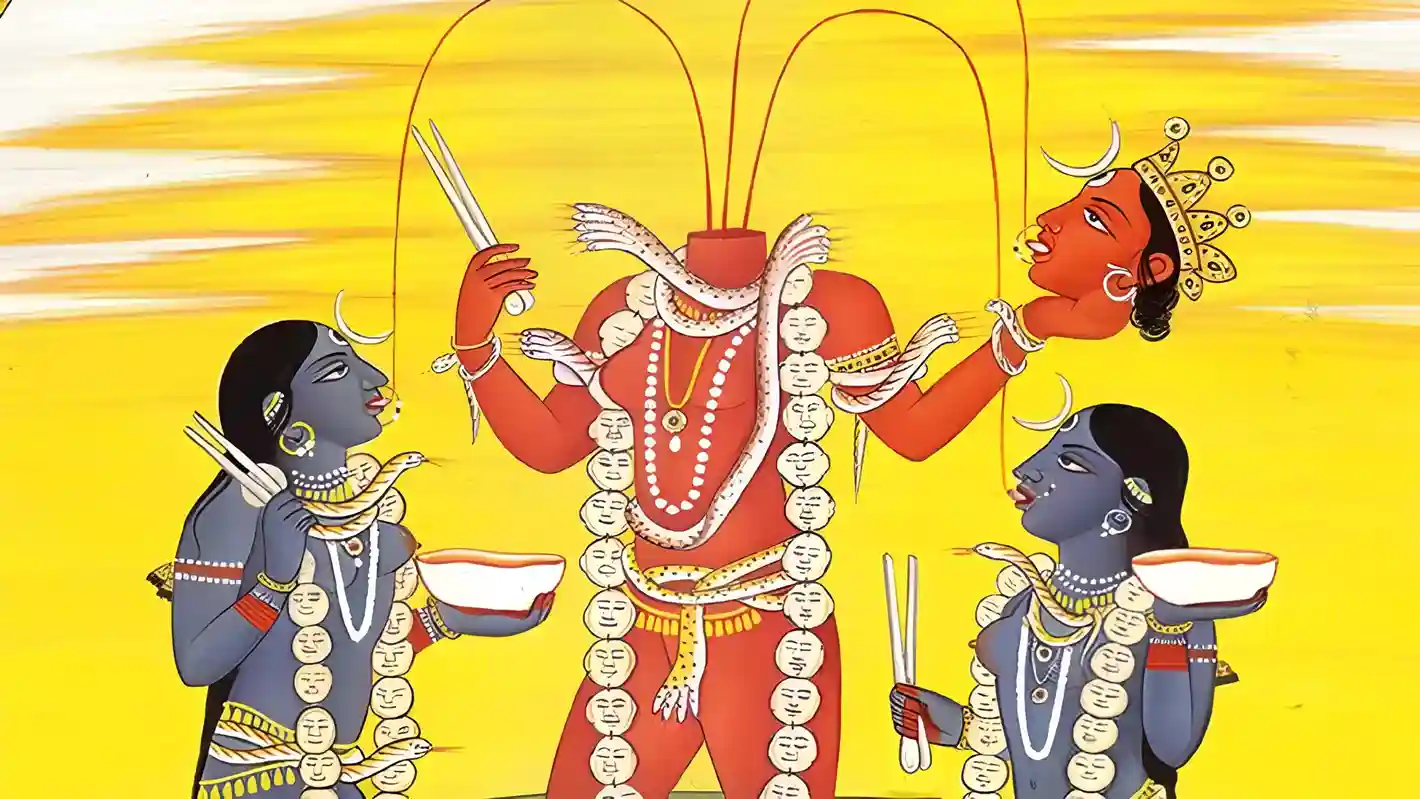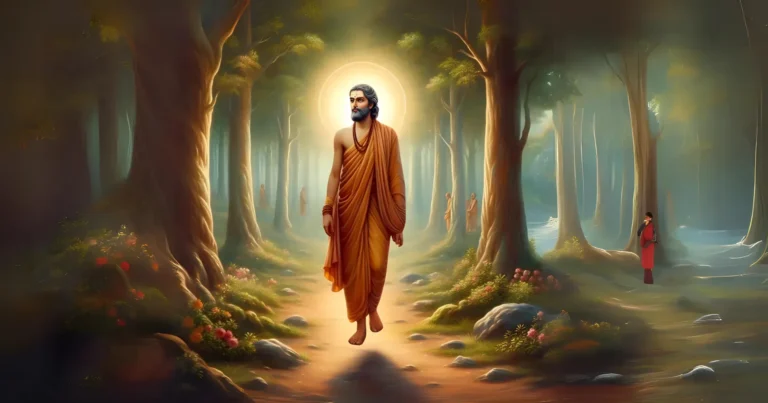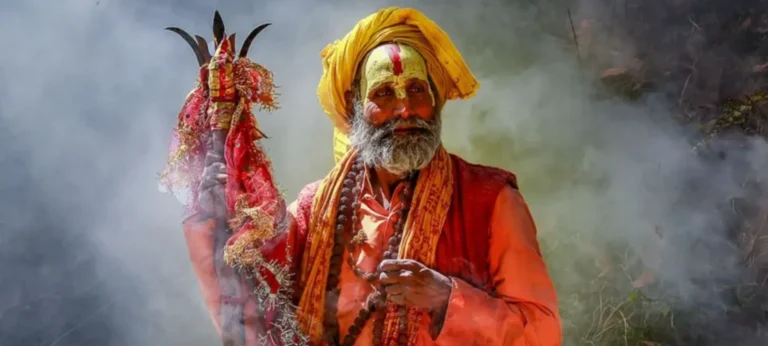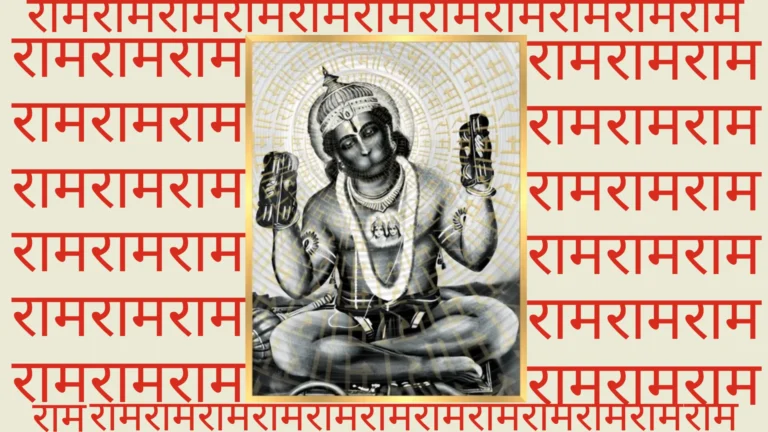Please Like the Blog and Share it for Maximum Reach
Table of Contents
Introduction to Chinnamasta Devi
Chinnamasta Devi is the sixth among the Dasha Mahavidya. Chinna means detaching, chopping off, while Masta means ‘head’. Hence, Chinnamasta Mahavidya is the headless manifestation of the universal mother. Her consort is Sri Kabandha Bhairava. There can be countless interpretations of Ma Chinnamasta.
Description of Chinnamasta Devi
Chinnamasta Devi holds a sword in one hand and her own head in the other. She has a dark red complexion.
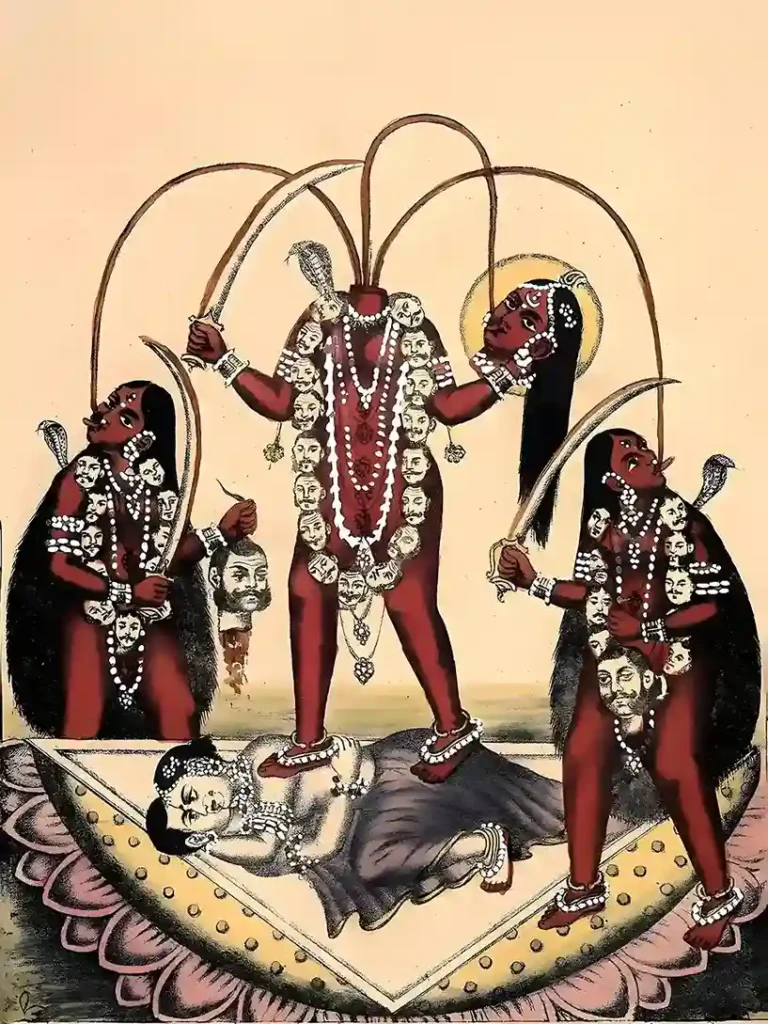
The goddess stands on Kamdev-Rati, the passionate couple and also wears a Munda mala or garland of skulls, symbolizing the coexistence of creative and destructive forces in the universal framework. She further allows her Sevikas or attendants to fill their stomachs with gushes of her blood and consumes it as well.
The very sight of blood, skulls, and sex sends chills down the spines of ordinary men. Hence, Tantrics perform their sadhana in seclusion, hidden from the eyes of society.
The Story of Chinnamasta Devi
The Prana Toshini Tantra and Swatantra Tantra describe the origin of Chinnamasta Devi and her attendants.
Once, Goddess Parvati took her attendants, Dakini and Varnini, for her bathing regime. With passing hours, her servants grew starving and pestered their mistress for food. Devi was busy bathing, so she postponed their request. Finally, the goddess felt guilty, and to satisfy their hunger, she chopped her head off with a sword.
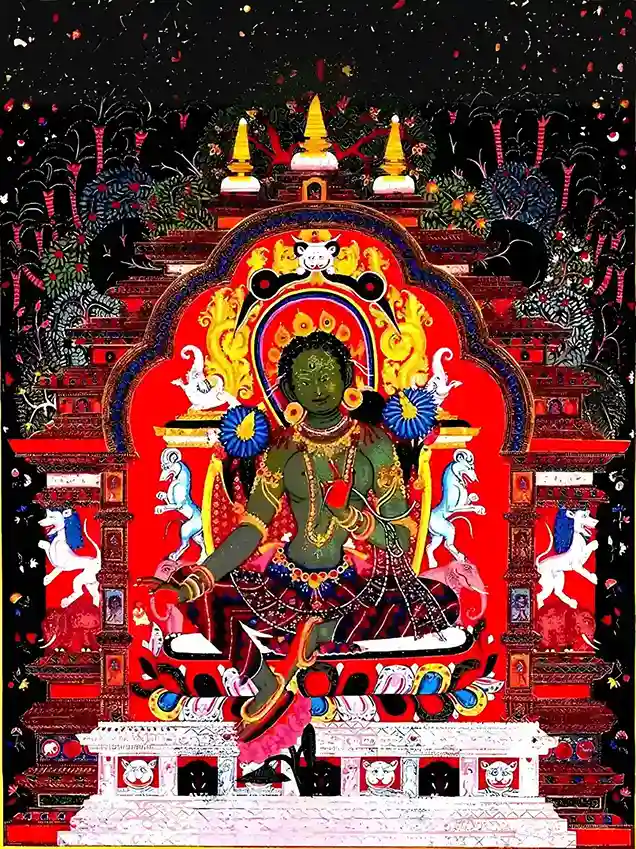
Some versions say that she used her terrible nails for the purpose.
Symbolism of Chinnamasta: The Headless Goddess
Three springs of blood oozed from Devi’s neck, which her attendants drank with pleasure. Dakini, the attendant on the left, gulps the left stream, symbolising the Ida Nadi. Varnini, the attendant on the right, drinks from the right stream, symbolising the Pingala Nadi.
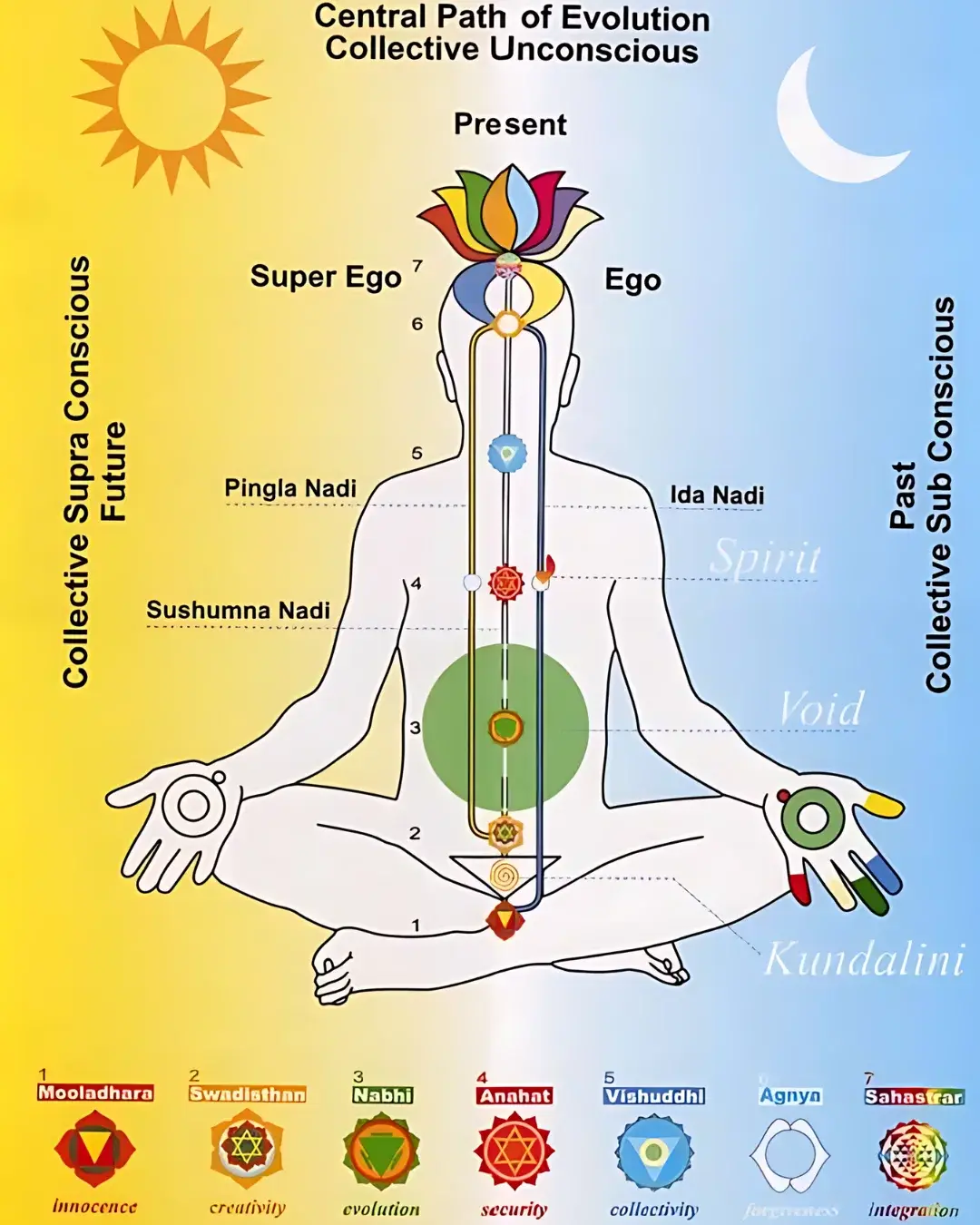
Finally, Chinnamasta Devi herself consumes the middle stream, representing the Sushumna Nadi. In yoga, the Sushumna Nadi is the channel through which the Kundalini energy reaches the Sahasra, or crown chakra. Thus, Goddess Chinnamasta exemplifies the path of Kundalini yoga.
Her detached head and the blood oozing from it represent the pain undergone at the dissolution of the ego. Ego is one’s identity and the very basis of existence. It binds us to the material world, generating feelings of ‘Me’ and ‘Mine’.
Here, the goddess represents the spiritual seeker who chops off his ego using the sword of self-effort and free will.
Finally, the individual sacrifices himself to benefit others.
Nature of Chinnamasta Devi
1) She is sacrificing: Usually, servants serve food to their masters. But here, the goddess defies this rule and offers her blood to satisfy her hungry attendants. Her self-sacrifice is thus proof of her motherly nature. However, the divine mother has assumed a gory form. She nourishes her attendants with blood over milk.
2) She Transcends Lust: The ability to put others before oneself comes only when one has transcended sexual instinct. Being nude, the goddess has not a trace of sexual desire in her as she steps on the copulating couple.
3) She is beyond Pure and Impure: The goddess and her attendants seem comfortably placed around the sexual activity, blood, skulls, and hair. Thus, they are all on a transcendental platform. Chinnamasta Devi is the reservoir of Tantra Shakti, possessing unparalleled spiritual powers.
7/8 Questions from Sanatana Dharma
The scores generated in this Quiz may or may not be absolute. There may be right or wrong answers to each Question. A percentage towards 100 indicates that you are more aligned to the overall subject matter.
Who can perform Chinnamasta Sadhana?
Chinamasta Sadhana taps into unseen and unheard realms. While Tara and Kali Mahavidyas demand Vairagya, or dispassion, in their sadhakas, Chinnamasta Sadhakas must be unmoved to withstand the fierce goddess.
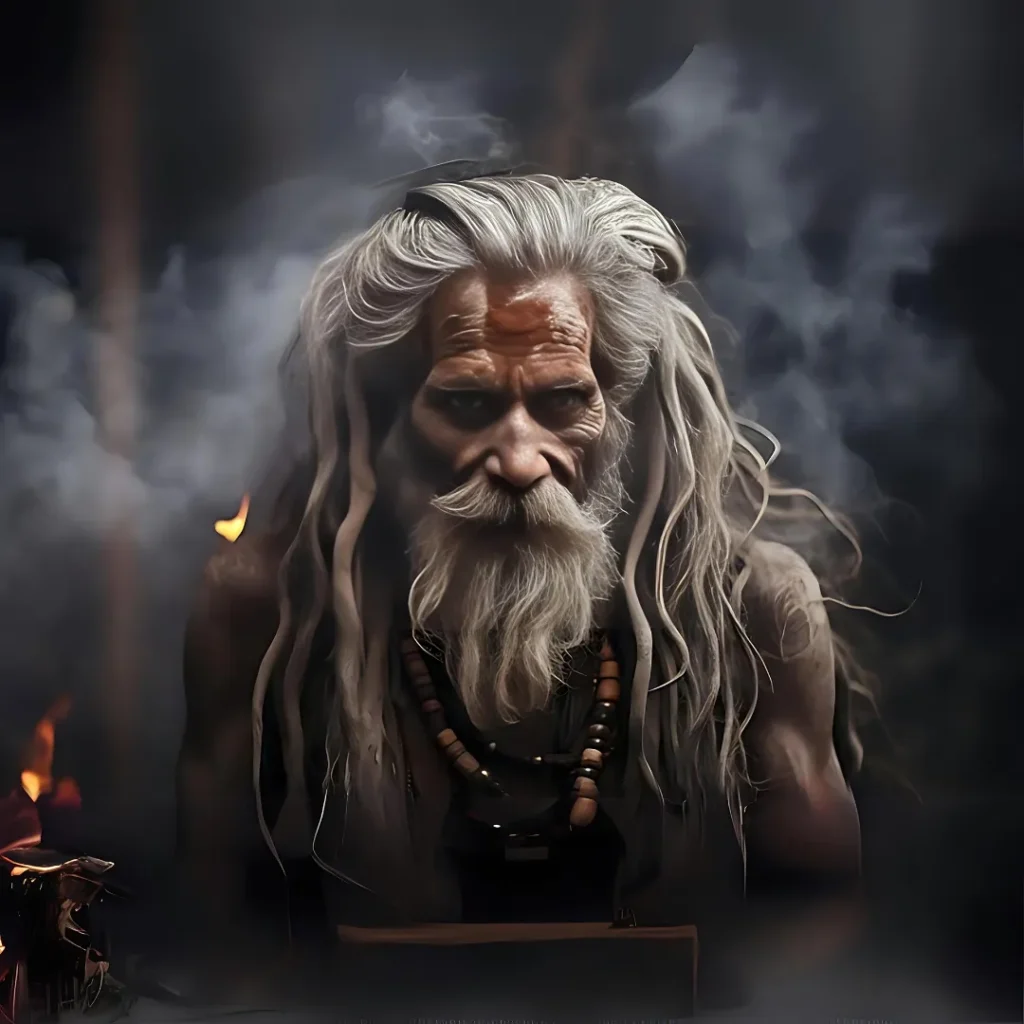
His mind must not distinguish between food and excreta, life and death, water and wine. Hence, I believe, one cannot pursue Chinnamasta Sadhana unless one belongs to that world. The Sadhaka must relinquish the so-called pleasures of life and be willing to sacrifice the last drop of his blood to achieve his spiritual goals.
The very basis of the Chinnamasta Devi revolves around the afterlife, unseen forces, enemies, the occult, and spirits.
Let us understand how. We all know that blood is the vital fluid that makes up our body. Devi consumes that blood, eventually resulting in the body’s death. For a Kali sadhaka, the body is a structure of bones.
For a Lalita Tripurasundari devotee, it is a means for desire fulfilment; for a Dhumavati Sadhaka, it is to undergo the sufferings of life; but for Devi Chinnamasta, the concept of the body doesn’t exist at all.
Thus, her sadhana deals with a certain soul type that sees life beyond the body.
Chinnamasta Sadhana is the path of dark Tantra. This article does not promote Chinnamsata Sadhana under any circumstance. I repeatedly emphasise the need for initiation to perform this sadhana. The Sadhaka must observe lifestyle and food restrictions, depending on the siddhi one wishes to gain.
Can one do Chinnamasta Sadhana at home?
The Sadhakas of Chinnamasta Devi defy the norms of the traditional school. As the very goddess stands out as bizarre and difficult to comprehend, her Sadhakas stay away from family life in secluded regions, most preferably crematorium grounds.
If I love Chinnamasta Devi, can I worship and chant her mantra?
Goddess Chinnamasta is a Tantric goddess. One must worship her according to Tantra.
Many people belonging to the Himachal region have goddess Chinnamasta as their temple deity and may have her darshan occasionally. But, here, I speak of serious sadhana.
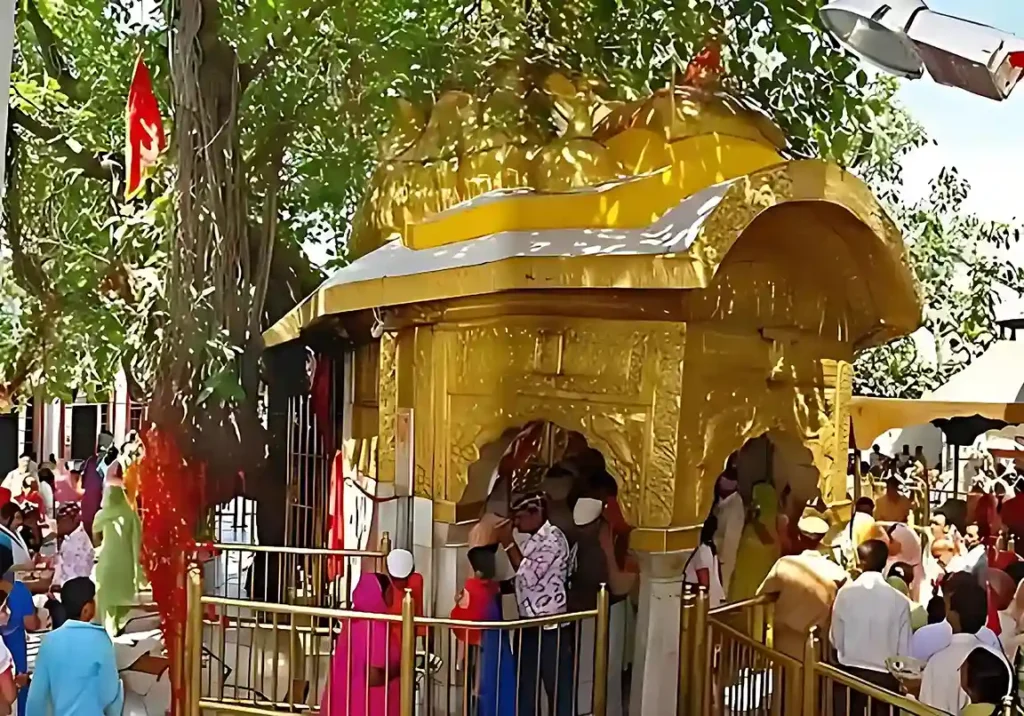
One should not take Chinnamasta Sadhana lightly. By repeatedly chanting the mantra, the sadhaka urges the Goddess to manifest. But when she appears with her attendants, one may leave one’s body in her fearful sight. If one is not able to bear the energies of Her attendants, life shall become turbulent. Sadhakas may have visions that other may not be able to see. They may sense the presence of the attendants near them.
A single error in her sadhana can displease her. So one needs an able Tantric guru to direct one along this perilous path.
The Vishwasara Tantra explicitly says:
PrachandachandikAmeva DhyAtvA yastu na pujayet
sadyastasya ShirashchitvA devi pivati shonitam ||
In Ma Chinnamasta’s sadhana, the sadhaka either attains Siddhi or immediate death. There is no other way around.
Now, people may argue that the mother goddess is always loving. She only displays her wrath towards evil. What is wrong with worshipping Ma Chinnamasta if our intentions are pure?
Well, in that case, why not choose a softer form of the mother goddess? If one expects the love of the universal mother, why would one want to watch her headless amidst skulls, blood, and sexual activity? People may come up with countless reasons. But know that this Sadhana is not for the weak-hearted.
Benefits of Chinnamasta Sadhana
Chinnamasta Devi did not think twice before cutting her head for her attendants. Hence, she uses all her mystical powers in the sadhaka’s favour. One shall feel like the king of the world. Dakinis, Varnini, and other lower beings are Chinnamasta’s servants.

They work to one’s advantage, granting victory and defeat to enemies. One conquers the vice of lust. Problems in health and relationships magically disappear as we enter the field of Goddess Chinnamasta. We have heard of rich to rags, but Ma Chinnamasta falsifies this saying, turning rags into rich.
Chinnamasta in Buddhism
Both Tara and Ma Chinnamasta have their Buddhist counterparts. In Buddhism, Chinnamasta Devi’s name is Chinnamunda, the headless form of Vajrayogini.
Please Like the Blog and Share it for Maximum Reach

